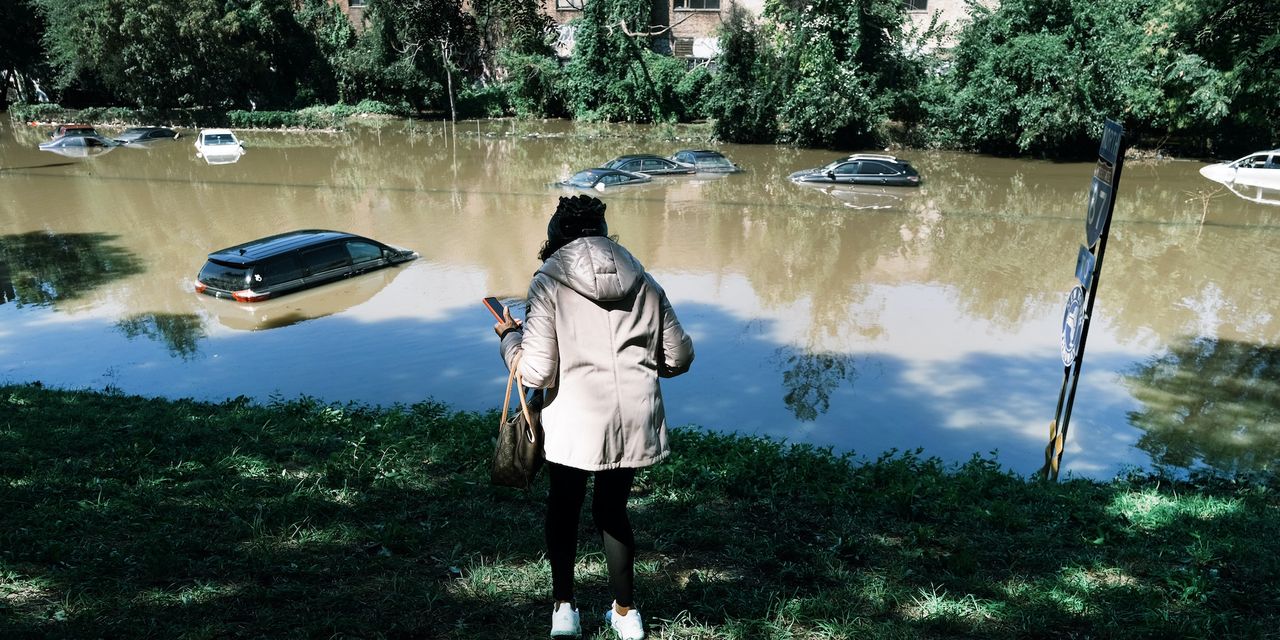
When hurricanes hit or rain destroys, the destruction often includes flood-damaged cars.
For car owners, this can spell the end of the line for their damaged vehicle. However, for used car buyers, this could be the start of a secondhand raw deal.
What does flood damage do to a car?
If fully submerged in water, a flood-damaged car will likely be a total loss. But not all flood damage totals cars. Either way, water can destroy electrical and mechanical systems, lubricants, and cause mold, rust, and corrosion over time.
Title washing: What you need to know after the flood
When buying a car, a major issue to be on the lookout for is title washing.
Title washing occurs when a vehicle’s title gets branded in one state as flood-damaged or even totaled but then gets transported to another state and the move among jurisdictions plays off different criteria for title branding. Due to these slight differences, vehicles that carry flood-damaged titles in one state may receive a clean title in another.
In the wake of a flood, less-than-reputable sellers use this underhanded method to pass off their cars to unsuspecting buyers. Often, these new owners won’t notice a problem until it’s too late.
Also on MarketWatch: This is what might really happen to your donated car
How to protect yourself from fraud
The best defense is a good offense. The first step is to check the car’s vehicle history report. Sites like Experian’s EXPGY, -1.05% AutoCheck and others provide comprehensive overviews. These reports track important information, including title branding and registration over the vehicle’s life, regardless of where the vehicle gets registered.
Other helpful tools include the Department of Justice’s National Motor Vehicle Title Information System and the National Insurance Crime Bureau’s VINCheck service, which is free to use.
Also see: Vehicle thefts are way up—here’s where the most cars are getting stolen
VINCheck compiles data from insurers and allows consumers to see whether a vehicle has ever been declared a total loss or salvaged.
It pays to complement a vehicle history check with a thorough inspection of the vehicle by a trusted and certified mechanic, too. When cars get submerged during a flood, water and debris work their way into areas they normally wouldn’t reach.
Even if a flood-damaged vehicle has been refurbished and cleaned up, a mechanic should be able to spot telltale signs of water damage.
Clues to spotting a flood-damaged vehicle
The National Automobile Dealers Association highlights several vehicle areas to check on your own, which include the following:
- Check the trunk. Check the vehicle’s interior and trunk for signs of water and debris. Feel the carpet for moisture and look under it for fading, stains, and rust. New or freshly shampooed carpet isn’t usually a good sign. Neither is rust on metal components in the center console or under the dashboard. Make sure to test any electrical components, such as the windshield wipers and air conditioning. Also, be aware of any odd odors, as these could be signs of mold and mildew.
- Inspect the car’s exterior and engine bay. Waterlogged headlights or a visible waterline should set off an immediate red flag. While underneath the hood, check for dirt and debris in alternator crevices. Also, inspect the small recesses near the starter motor, power steering pump, and behind wiring harnesses. Further, check for visible corrosion and wear to the car’s electrical components.
- Look beneath the car. Make sure to look for caked-on debris, as well as premature rusting and metal flaking, especially on newer vehicles. Brake discs tend to show rust very quickly.
“I would advise anyone looking to buy a used car, period, to look into that vehicle’s history,” notes Roger Morris, National Insurance Crime Bureau communications officer. “Consumers should be very cautious of any used vehicle they buy in the aftermath of a flood. You can clean up a car pretty well, but it’s the two to three months afterward when problems really start to show up.”
How hard is it to repair a flood-damaged car?
If you do find yourself in the position of owning a flood-damaged car, many wonder if the flood damage is repairable. The answer is yes and no. Insurance companies decide the fate of affected vehicles.
They will write off and brand them as flood-damaged cars. They’ll sell them for salvage. But some will hit the roadways once again.
These vehicles slowly deteriorate from the inside out. So the question would be, is it worth it to repair a flood-damaged car? An experienced mechanic can determine the damage and let you know if fixing the vehicle would be worth it or not.
Check out Kelley Blue Book’s Fair Repair Range, which allows you to check repair prices and it provides a cost range for some common vehicle repairs.
This story originally ran on KBB.com.










Add Comment